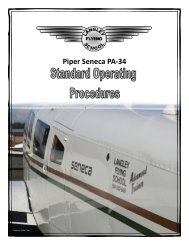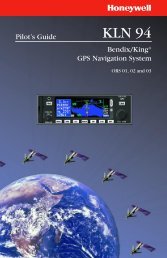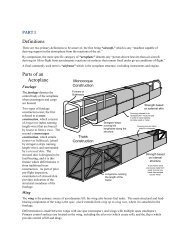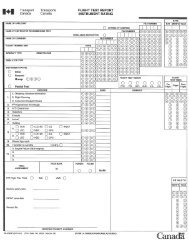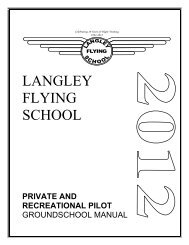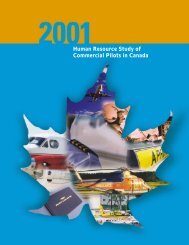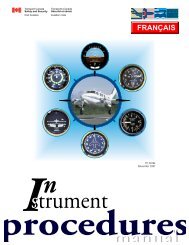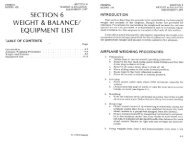LANGLEY FLYING SCHOOL Flight Training Handbook
LANGLEY FLYING SCHOOL Flight Training Handbook
LANGLEY FLYING SCHOOL Flight Training Handbook
Create successful ePaper yourself
Turn your PDF publications into a flip-book with our unique Google optimized e-Paper software.
<strong>Flight</strong> <strong>Training</strong> <strong>Handbook</strong> Page 48<br />
Langley Flying School, Inc.<br />
29. What is the proper procedure with respect to turning on an ELT when an emergency warrants the use of an<br />
ELT<br />
30. What is the proper procedure when a pilot is planning a takeoff or landing, but then discovers an<br />
approaching thunderstorm<br />
31. What is the idle blast danger area behind an idling heavy (jumbo) jet aircraft and an idling light jet aircraft<br />
32. What is VHF direction-finding service, who provides it, and when can it be used by a pilot<br />
33. What minimum altitudes must be maintained by a pilot during flight over a built-up area and flight over a<br />
non-built-up area<br />
34. For the purpose of flying, when does night begin, and when does it end<br />
35. What is the rule with respect to flying and alcohol consumption<br />
36. What distances must a pilot remain from cloud in controlled and uncontrolled airspace<br />
37. What are the rules with respect to entry into Class C and Class D airspace<br />
38. Some airports in the interior of B.C. have “VDF” noted on the VNC. What does this mean and how does a<br />
pilot use the service<br />
39. Is a low-level airway controlled or uncontrolled airspace<br />
40. What is the minimum flight visibility required in controlled airspace<br />
41. In what type of airspace can a Special VFR clearance be provided by ATC<br />
42. Following an accident, under what circumstances can an aircraft be moved<br />
43. When must an aircraft accident be reported to the Transportation Safety Board of Canada<br />
PILOT RADIO LICENCE STUDY QUESTIONS<br />
The following provides study questions that may be anticipated on Langley Flying School’s RORC Examination for<br />
issue of the Radiotelephone Operator’s Restricted Certificate (Aeronautical). 51 The study and reference material for<br />
this examination appears on P. Error! Bookmark not defined. of this <strong>Handbook</strong>. In addition to the questions<br />
below, students preparing for examination must memorize the phonetic alphabet.<br />
1) What is the international VHF distress frequency<br />
2) What forms of communication are not permitted over the radio<br />
3) What is the order of priority for transmission<br />
4) To whom should a distress signal be addressed<br />
5) What actions should a pilot take when a distress transmission is heard<br />
6) What are the rules governing transmissions during distress traffic<br />
7) What is the proper format for the initial broadcast of a distress message<br />
8) What is the correct format for reporting an aircraft’s altitude<br />
9) What are the meanings of the numeric code associated with a radio check<br />
10) Who may initiate a distress message from an aircraft<br />
11) When must a Radiotelephone Operator’s Restricted Certificate be renewed<br />
12) What communication should be made if you could not properly hear a transmission from ATC<br />
51 See P. 17 for a description of this.<br />
2012 David L. Parry



